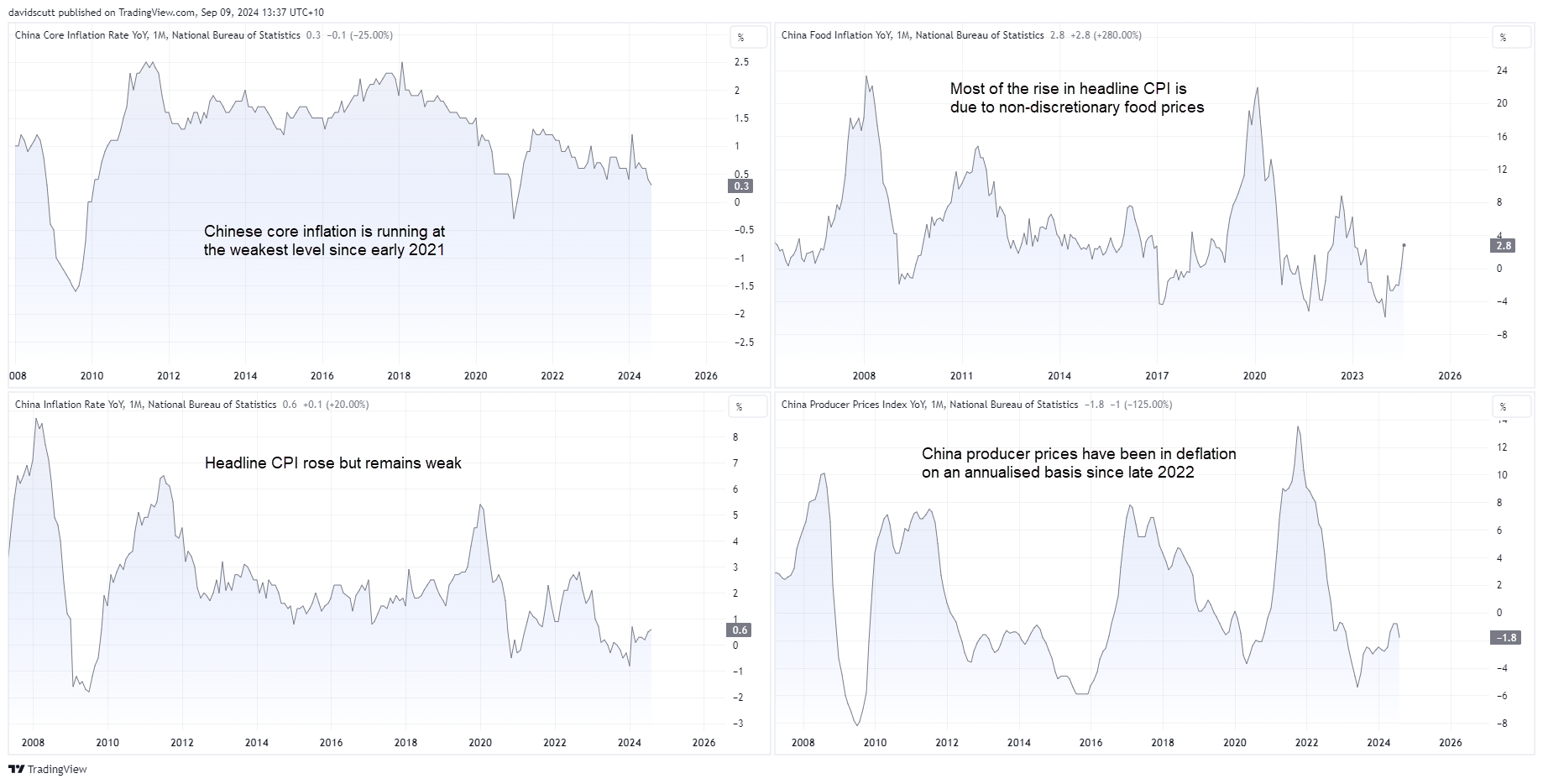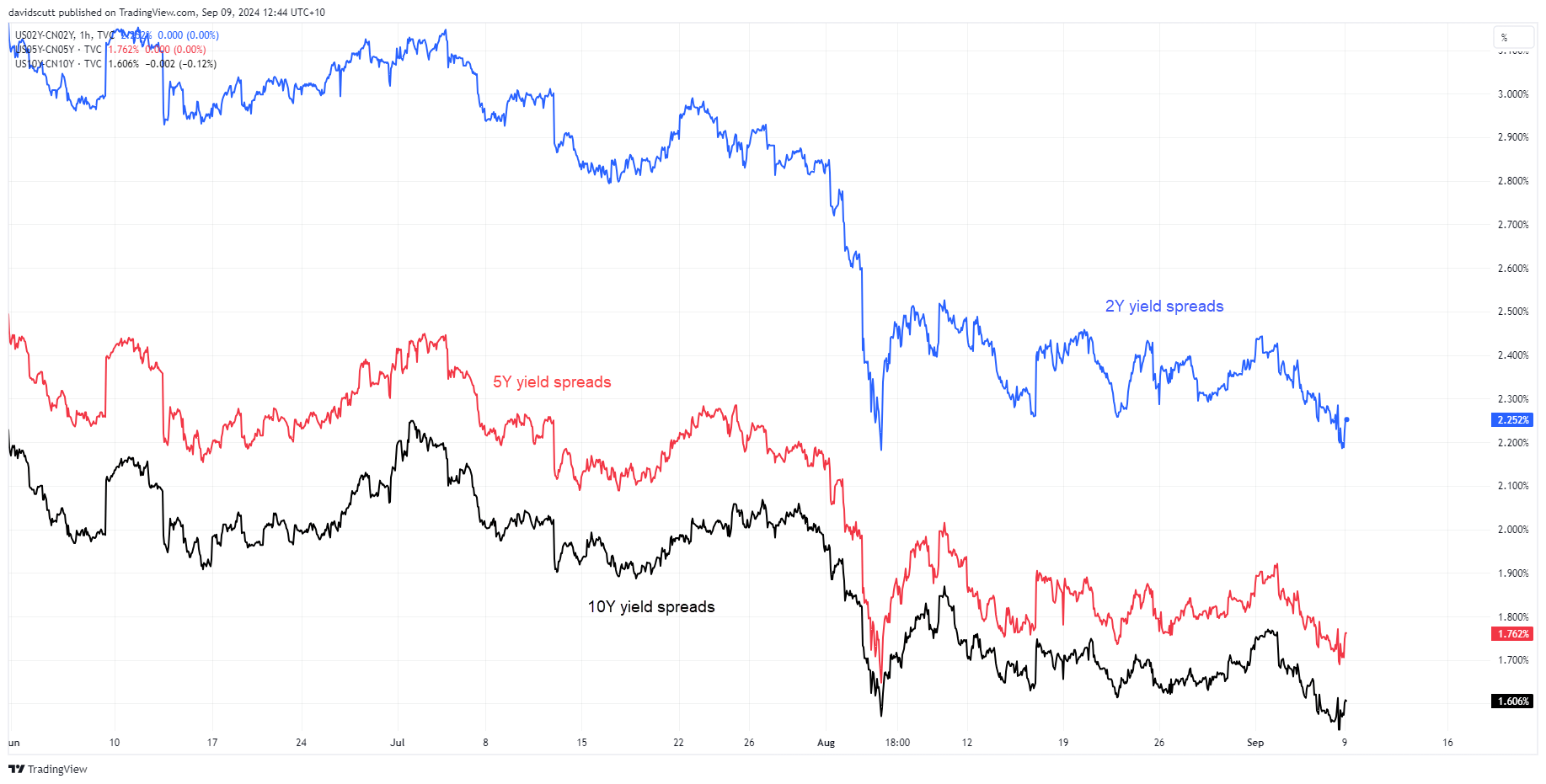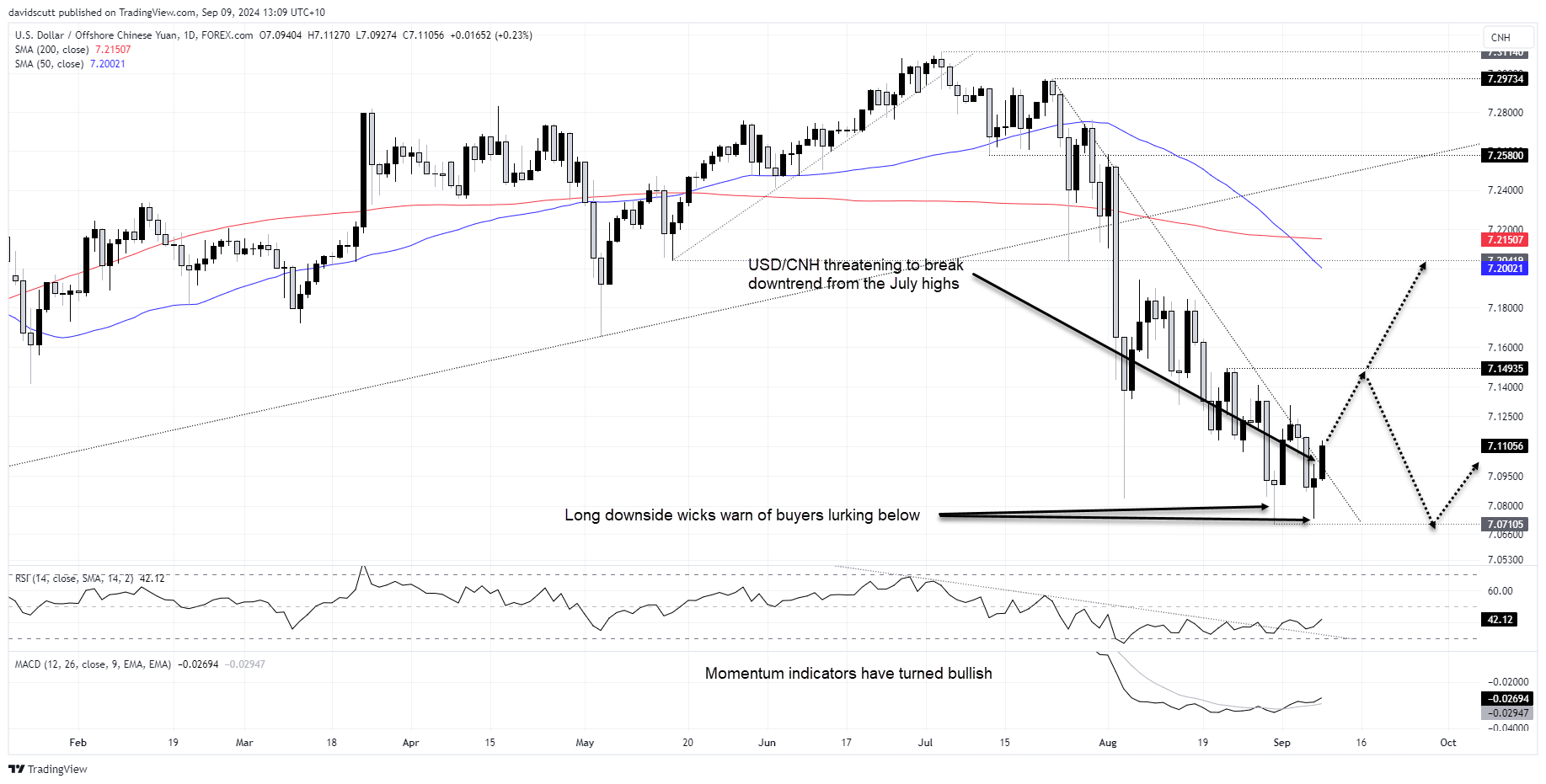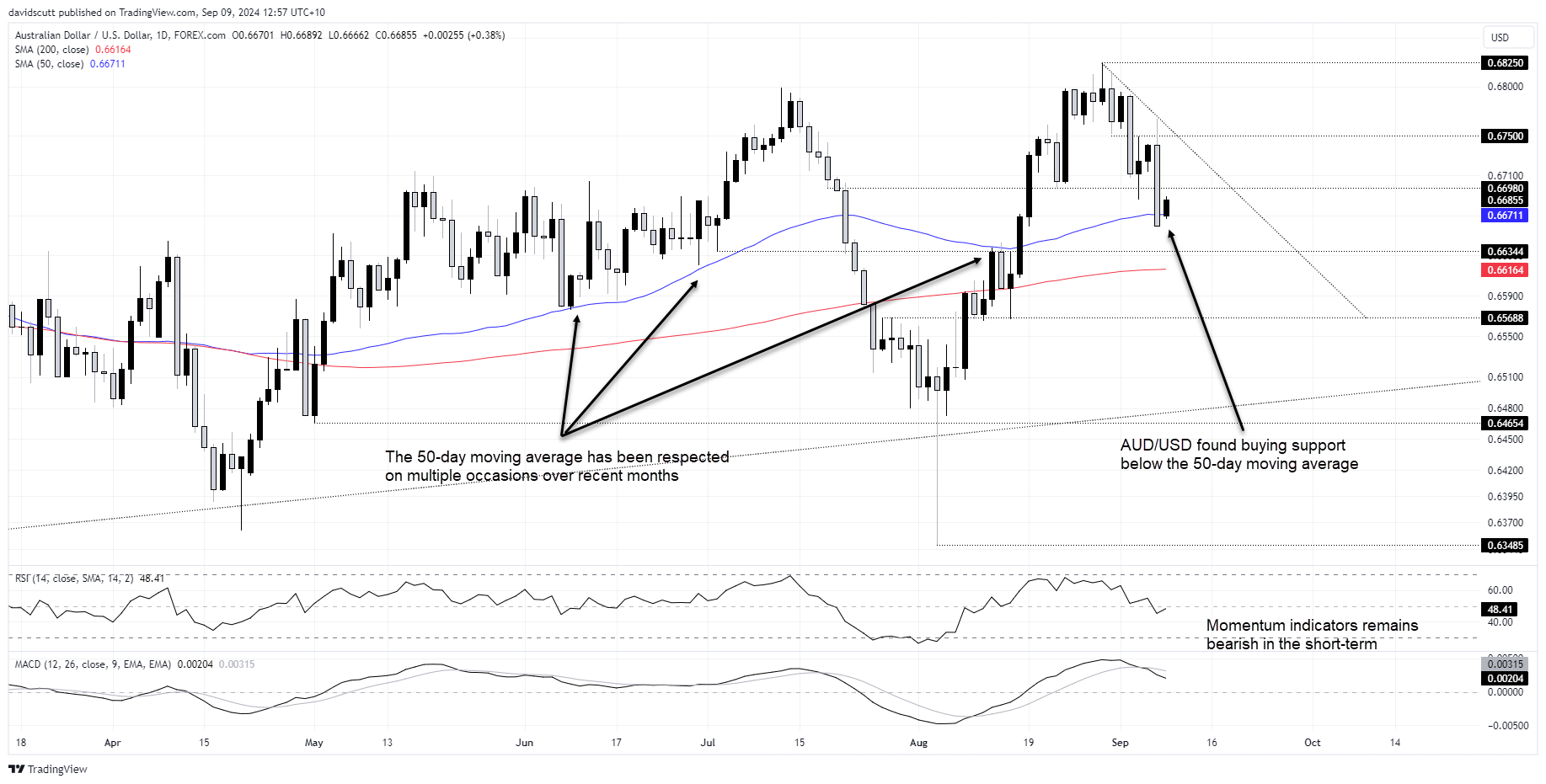
- Chinese inflationary pressures undershot already weak expectations again in August
- This keeps the prospect of further easing from the PBOC on the table, limiting yield spread compression with the United States
- USD/CNH breaks downtrend, pointing to sideways range trade or upside reversal risk
Overview
Chinese inflationary pressures remain weak, posing a threat to downtrend in USD/CNH sparked by sharply lower US Treasury yields. With Chinese economic data showing no meaningful sign of improvement, and with over 200 basis points of rate cuts expected from the Fed over the next 12 months, any stabilisation or reversal of interest rate differentials could deliver renewed weakening in the yuan. Where it moves, other Asian currencies such as the Australia dollar are likely to follow.
China inflation remains acutely weak
China’s latest inflation report had all the hallmarks of an economy battling overcapacity and tepid demand.
Headline inflation rose 0.4% in August, undershooting the 0.5% gain expected. That left prices up 0.6% over the year, again below forecasts and well short of the 3% rate loosely targeted by the People’s Bank of China (PBoC).
Once food inflation was stripped out of the calculation, non-food inflation grew an anemic 0.2% from a year earlier. Core inflation was also soft, rising just 0.3% from a year earlier, the weakest result since March 2021.

There’s also little sign of upstream price pressures emerging either with producer price inflation falling 0.7% over the month and 1.8% over the year. Markets were looking for PPI to decline by a slower 1.4%.
The weakness in factory gate inflation does not only imply tepid demand from inside China but also points to persistent deflationary pressures for export prices, potentially contributing to weakness in trade and consumer goods prices in developed nations in the months ahead.
Which is limiting yield spread compression with the United States
With weak CPI and PPI figures continuing to point to the risk of lower interest rates in China, it’s limited the decline in yield differentials with the United States relative to other nations over the past month.
Despite expectations for Fed easing over the next year ballooning to fresh cyclical highs of more than 225 basis points, US-China yield spreads for two, five and 10-year terms have struggled to meaningfully break below the lows set in early August.

While yield spreads between China and the US have weakened recently as key driver of USD/CNH movements, if that were to revert to levels seen earlier this year, it could generate upside risks for USD/CNH should spreads begin to widen once again.

USD/CNH attempts bullish break of downtrend
The technical picture for USD/CNH warns of potential upside risks with the pair bouncing strongly following probes towards 7.07105, the latter hammer candle from Friday sending it back through downtrend resistance. Should the price close through the downtrend, it will point to the potential for sideways range trade or a reversal higher.
If the former, one potential range could be between 7.07105 on the downside and 7.14935 on the topside. Minor resistance may be encountered around 7.1300 and 7.1410 in between.
If we’re looking at a meaningful reversal, you’d likely need to see 7.14935 broken, opening the door to a push back towards 7.2000 where the 50 and 200-day moving averages reside.
From a momentum perspective, RSI (14) has broken its downtrend convincingly while MACD has crossed over from below, generating bullish signals.

Yuan weakness may generate downside risks for AUD/USD
If we see USD/CNH upside materialise, it may create renewed downside pressure on the likes of the Australian dollar given if often strengthens and weakens in line with moves in the yuan.
AUD/USD found support below the important 50-day moving average following last Friday’s ugly close, pointing to the risk that horizontal resistance around .6698 may be tested in the near-term. Above, the minor downtrend from the August highs and .6750 are the first levels of note.
If the 50-day moving average were to give way it could prompt further selling, putting .66344, the 200-day moving average and .65688 into potential play. Right now, signals from momentum indicators remain bearish.

Written by David Scutt
Follow David on Twitter @scutty






